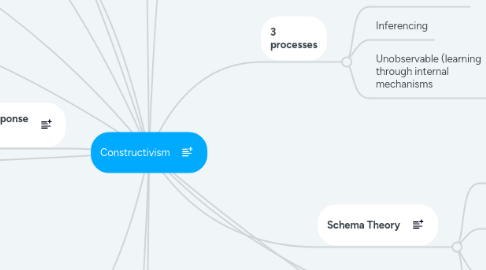Constructivism
by Alli Smoker


1. Graphophonic (visual patterns of words and their sounds
2. Constructivist ~ Active, internal cognitive engagement as central to the reading process.
3. (Tracy, Morrow, 2006) Recognizes the centrality of internal, nonabsorbable events to learning and knowledge construction (p. 56)
4. Reader Responses
4.1. Efferent (fact oriented) and Aesthetic (Personal and emotionally based)
5. (Tracy, Morrow, 2006) Reading a natural process that children acquire if immersed in a high quality literacy environment and exposed to meaningful authentic literacy experiences in high quality literature (pp. 59 - 60)
6. Transactional/Reader Response Theory
6.1. Constructivist ~Emphasis active role of reader making meaning
6.2. Connections ~ Text to self, text to text and text to world.
6.3. Post reading activities. Literary responses groups, reader's theater, story telling, dioramas, ..etc..
7. Psycholinguistic Theory
7.1. Study of the links between psychology and language
7.2. Cueing system (used to make predictions about test based on knowledge. ~ Make an Hypothesis ~ Predict what text will say
7.2.1. Syntactic (grammar)
7.2.2. Semantic (meaning)
7.3. Active participants in the reading process
7.4. Running records, guided reading lessons
8. Whole Language Theory
8.1. Listening, speaking, reading, writing, are all interconnected
8.2. Thematic instruction
9. Metacognition Theory
9.1. Comprehension strategies
9.1.1. "Fix up" strategies, goal setting, self questioning, summarization, visualization, purpose of reading, over viewing the text, reading selectively, making associations to ideas, revising prior knowledge
